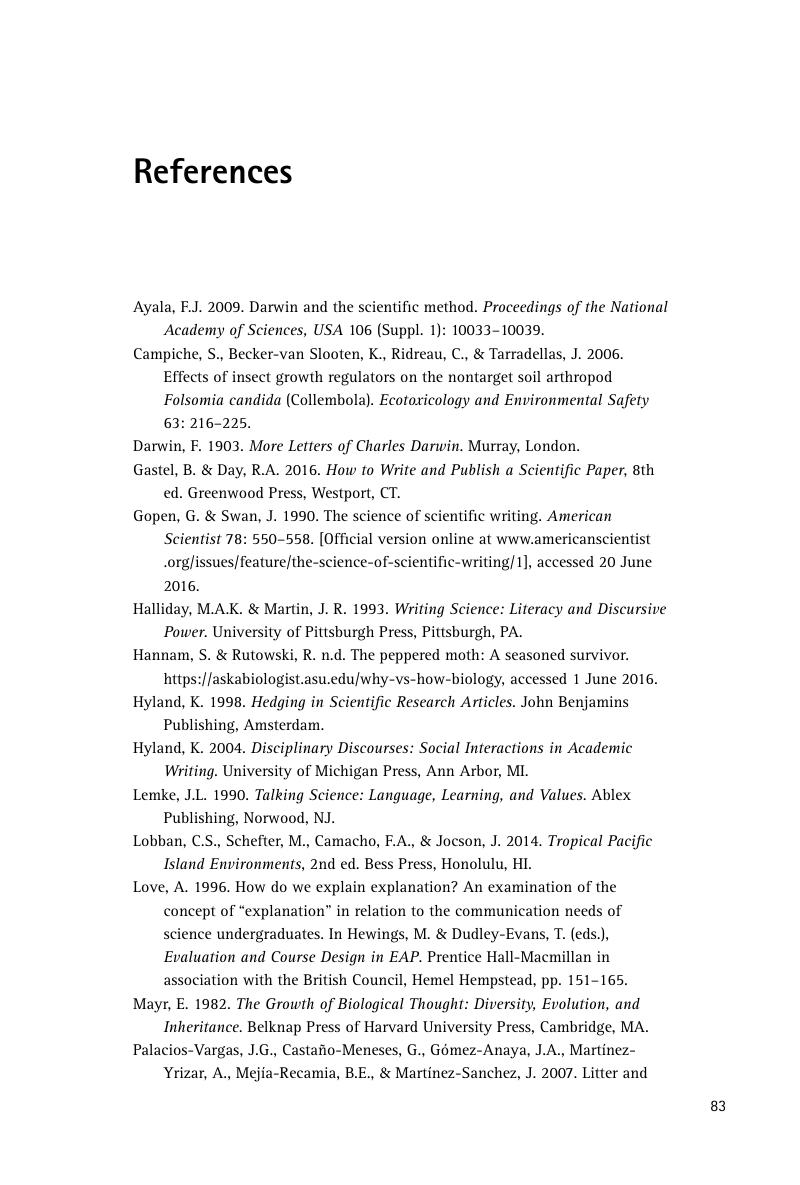Book contents
- Writing Undergraduate Lab ReportsA Guide for Students
- Writing Undergraduate Lab Reports
- Copyright page
- Dedication
- Contents
- Acknowledgments
- To the Student
- Part I Introduction
- Part II Writing the First DraftFormat
- Part III Crafting the Final Version
- Part IV The Anatomy of Scientific Papers
- References
- Further Reading
- Index
- References
References
Published online by Cambridge University Press: 31 July 2017
- Writing Undergraduate Lab ReportsA Guide for Students
- Writing Undergraduate Lab Reports
- Copyright page
- Dedication
- Contents
- Acknowledgments
- To the Student
- Part I Introduction
- Part II Writing the First DraftFormat
- Part III Crafting the Final Version
- Part IV The Anatomy of Scientific Papers
- References
- Further Reading
- Index
- References
Summary

- Type
- Chapter
- Information
- Writing Undergraduate Lab ReportsA Guide for Students, pp. 83 - 84Publisher: Cambridge University PressPrint publication year: 2017



